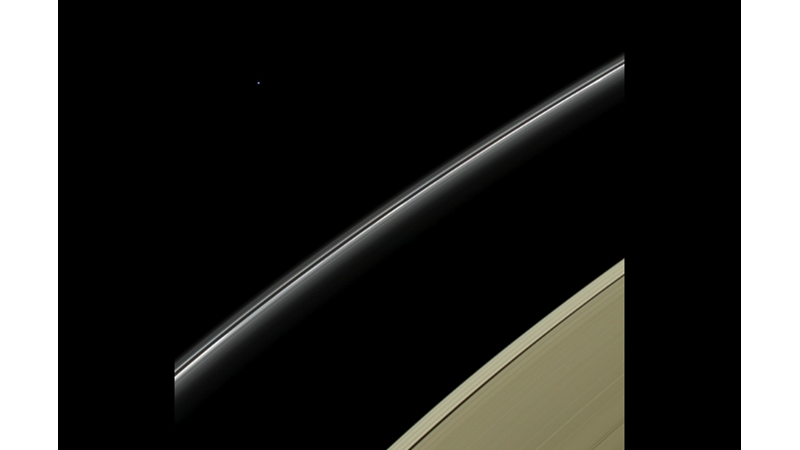Uranus, seen as a blue dot in the upper left corner of this natural color image, was observed by the Cassini spacecraft as it passed by Saturn's rings. This image represents what the human eye can see. At the time, Cassini was about 614,300 miles (988,600 km) from Saturn and 28.3 astronomical units from Uranus. One astronomical unit is the average distance between the Earth and the Sun, which is considered to be 93 million miles (150 million km).
Uranus appears pale blue because its atmosphere contains methane gas and very few aerosols and clouds. Sapphire-colored planets like both Uranus and Neptune absorb red wavelengths of sunlight, while allowing blue wavelengths to be reflected back into space. This feature allows the planet to be seen with this distinctive shade of blue.
Image description:
Several of Saturn's rings cut diagonally across the image from the right corner. In the lower right, a large tan ring is visible, framed on its outer edge by a lighter colored ring. Near the center of the image, several thinner rings glowing white intersect. In the distance in the upper left is the gas giant Uranus, visible as a blue dot only a few pixels wide.
Credit: NASA/JPL-Caltech/Institute for Space Science


 Nielawore
Nielawore









Yorum yazmak için lütfen giriş yapınız